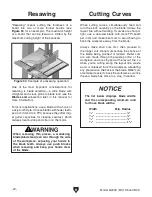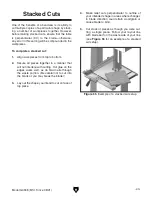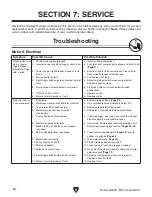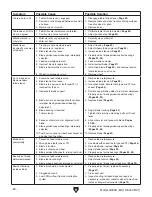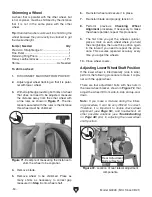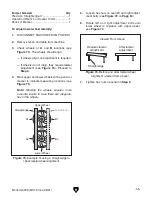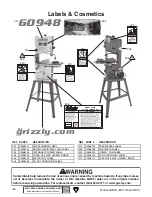
-56-
Model G0948 (Mfd. Since 08/21)
1. Cut a piece of scrap wood approximately
3
⁄
4
"
thick x 3" wide x 17" long. On wide face of
board, draw a straight line parallel to long
edge.
2. Slide bandsaw fence out of way and cut
along the line halfway through the board.
Turn bandsaw
OFF and wait for blade to
stop. Do not move board.
3. Clamp board to bandsaw table, then slide
fence over to board so it barely touches one
end of board.
4. Loosen fence adjustment cap screws, skew
fence so it is parallel with scrap piece, then
tighten cap screws.
5. Make a few cuts using fence.
— If blade lead is still present, repeat
Steps 1–4 until blade and fence are paral-
lel with each other.
Blade Lead
Bandsaw blades may wander off the cut line when
sawing, as shown in
Figure 75. This is called
blade lead.
Figure 75. Example of blade lead.
Item(s) Needed
Qty
Hex Wrench 4mm. ............................................. 1
Scrap Wood
3
⁄
4
" x 3" x 17" ................................. 1
Clamp 4" ............................................................ 1
1. Make sure blade is properly tensioned, and
blade guides are adjusted correctly.
2. Use less pressure when feeding workpiece
through cut.
3. Make sure miter slot and fence are parallel to
blade line (see
Aligning Table and Aligning
Fence procedures for detailed information).
4. Perform test cut with bandsaw.
— If there is still blade lead present, com-
pensate for this condition by skewing
the fence, as instructed in the following
procedures.
Correcting Blade Lead
Skewing Fence
Blade lead is usually caused by too fast of a
feed rate, a dull or abused blade, or improper
blade tension. If your blade is sharp/undamaged,
properly tensioned, and you still have blade lead,
perform the following procedures.
Summary of Contents for G0948
Page 68: ......

